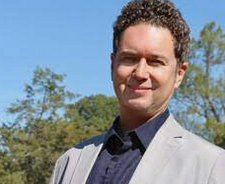Abstract
The contemplative technique of tummo (gtum mo, caṇḍālī) – literally, the “fierce lady” – is a consummate practice of Vajrayāna Tibetan Buddhist yoga. To understand this somatic yoga and breathwork practice, this presentation discusses (a) tummo in the context of a Buddhist tantric practice curriculum; (b) the philosophy and practice of inducing yogic heat and rapturous bliss described in classical Tibetan yoga manuals, including a discussion of subtle body physiology, thermogenesis, and the correlation of tummo with sexual yoga; (c) popular depictions that introduced tummo to the modern Buddhist imagination, including drying wet sheet ceremonies in Tibet and contemporary spin-offs; and (d) scientific research on the neurophysiological effects of arousal induced by tummo on core body temperature, cerebral blood flow, and cognitive correlates. The presentation concludes with reflections on working with technologies of breath in yogic Buddhism.
Questions for reflection
At what stage of a normative Vajrayāna contemplative curriculum is tummo typically practiced? And what other ways can tummo be practiced?
What are three kinds of practices applied during completion stage yogas?
What is the intended outcome of tummo practice? And what is the primary symptom?
What physiological feat did the first scientific study on tummo demonstrate?
Name the scientific reasons why tummo can be dangerous and state why Buddhist practitioners have historically practiced tummo under the supervision of an experienced teacher.
Further reading
Baker, Ian. 2019. Tibetan Yoga: Principles and Practices. Inner Traditions.
Benson, Herbet et al. 1982. “Body Temperature Changes During the Practice of G-tummo Yoga””. In Nature, 295, 234-236.
David-Néel, Alexander. 1958. Magic and Mystery in Tibet. University Books.
Harding, Sarah (trans.) 2021. Four Tibetan Lineages: Core Teachings of Purification, Severance, Shangpa Kagyü, and Bodong. Wisdom Publications.
Kozhevnikov, Maria et al., 2013. “Neurocognitive and Somatic Components of Temperature Increases During G-tummo Meditation: Legend and Reality”. In PLOS One, 8, 3.
Mullin, Glen H. (trans.) 2005. The Six Yogas of Naropa. Snow Lion Publications.
_____. (trans.) 2006. The Practice of the Six Yogas of Naropa. Snow Lion Publications.
Nestor, James. 2020. Breath: The New Science of a Lost Art. Riverhead Books.
Yangömpa, Gyalwa. 2015. Secret Map of the Body: Visions of the Human Energy Structure. Translated by Elio Guarisco. Shang Shung Publications.
Michael R. Sheehy is a research assistant professor in Tibetan and Buddhist studies and the director of scholarship at the Contemplative Sciences Center at the University of Virginia. His writing, translation, and research give attention to philosophical thought and contemplative practices in Tibet, and more broadly, to the relevance of meditation research to the interdisciplinary humanities. Michael has studied extensively in Buddhist Asia, including three years in a Buddhist monastery in the nomadic Golok region of eastern Tibet and over a decade working with monastic communities on-the-ground to digitally preserve rare manuscripts across the Tibetan plateau. As a visiting scholar at Harvard Divinity School and at the Mind & Life Institute – where he directed programs including Mind & Life Dialogues XXXII in Botswana and XXXIII in India with the Dalai Lama – he has collaborated in interdisciplinary and intercultural dialogues that interface Buddhism with discourses in the humanities, cultural psychology, and the cognitive sciences. His current research focuses on generative, dynamic, and ever-evolving processes of contemplative practices detailed in Tibetan Buddhist yoga and meditation manuals. He is co-editor of The Other Emptiness: Rethinking the Zhentong Buddhist Discourse in Tibet.

